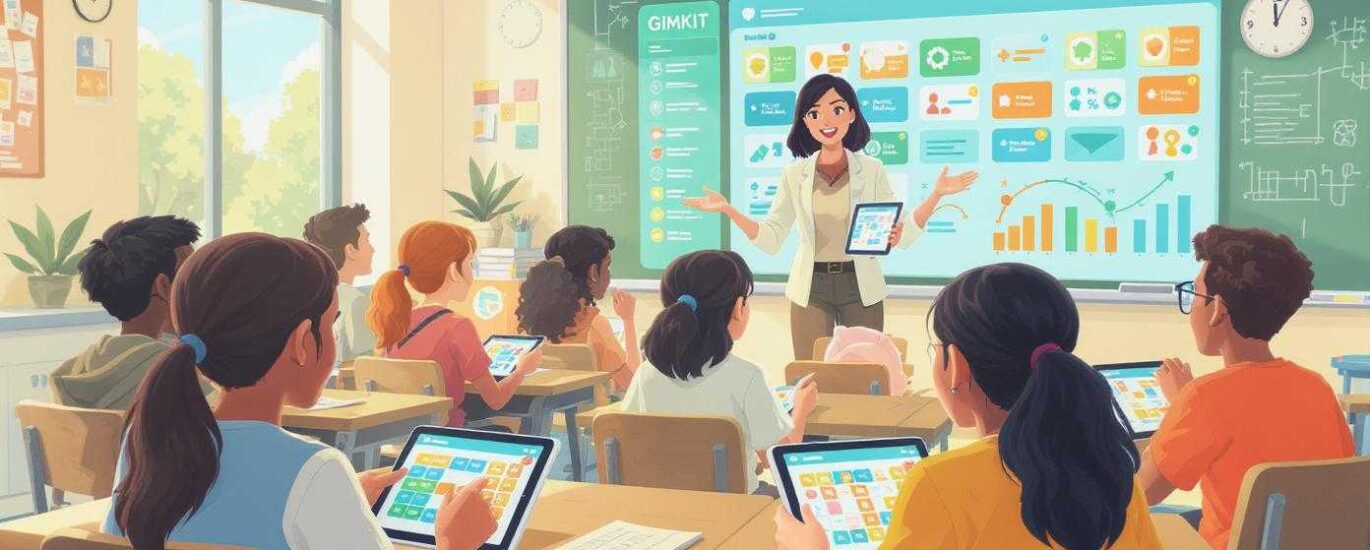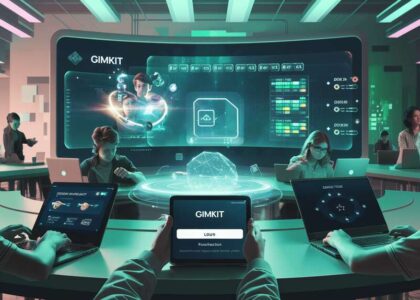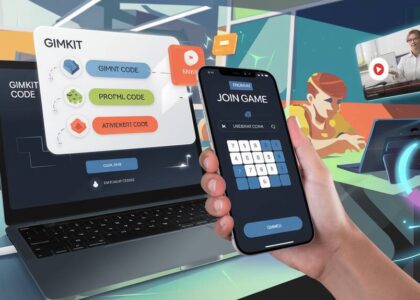Hey, teacher friend! Picture this: you walk into your classroom, and instead of groans about another quiz, your students are buzzing with excitement, practically begging to get started. Sounds like a dream, right? Well, it’s not as far-fetched as you might think, thanks to the Gimkit dashboard. If you’re unfamiliar, Gimkit is a game-based learning platform that turns boring old quizzes into interactive, student-loved challenges. But here’s the thing—the real game-changer isn’t just the platform itself; it’s how you use the Gimkit dashboard to craft experiences that light up your classroom.
I get it—teaching is tough. You’re juggling lesson plans, grading, and that one kid who always asks, “Is this going to be on the test?” Keeping students engaged can feel like herding cats. That’s why I’m spilling some Gimkit dashboard secrets that’ll help you turn those restless moments into a classroom full of eager learners. Let’s uncover five practical, teacher-tested tricks to boost engagement using this tool. Ready? Let’s jump in!
What’s the Gimkit Dashboard All About?
Before we get to the good stuff, let’s talk basics. The Gimkit dashboard is your control hub. It’s where you create games, tweak settings, and check how your students are doing. Think of it like the cockpit of a plane—everything you need to steer the learning experience is right there. When you log into gimkit/dashboard, you’ll see options to build question sets (called kits), launch live games, assign homework, and peek at performance stats. It’s simple to use, even if tech isn’t your strong suit.
I remember my first time using it—I was skeptical. Could a game really make my students care about fractions? But after playing around with the dashboard Gimkit offers, I was hooked. It’s packed with features that let you personalize learning, and that’s where the magic happens. Now, let’s move on to the secrets that’ll make your classroom the place students can’t wait to be.
Secret 1: Let Students Take the Wheel with KitCollab
Why It Works
Ever notice how students perk up when they feel like they’re part of something? The Gimkit dashboard has a gem called KitCollab that lets them create quiz questions themselves. When kids contribute, they’re not just playing a game—they’re invested in it. It’s like handing them the keys to the car and saying, “You drive.”
How to Do It
Here’s the quick rundown:
-
Head to the Gimkit dashboard and hit “New Kit.”
-
Select “KitCollab” from the options.
-
Set up your kit—pick a subject, like science or history.
-
Grab the collaboration link and share it with your class.
-
Watch as students send in their questions, then approve them from the dashboard.
Last year, I tried this with my 7th graders during a unit on ecosystems. I was swamped with parent-teacher conferences and didn’t have time to write a full quiz. So, I turned to KitCollab. My students came up with questions like, “Which animal eats both plants and meat?” and “What’s the biggest threat to coral reefs?” Not only did they nail the content, but they were also pumped to play a game they helped build.
Why It Boosts Engagement
When students see their questions pop up in a live game, they light up. It’s their work on display, and suddenly, they’re cheering each other on. Plus, it cuts your prep time—a win-win!
Secret 2: Power-Ups That Pack a Punch
What’s the Deal with Power-Ups?
In Gimkit, power-ups are little boosts students can earn, like doubling their points or getting a second shot at a tricky question. The Gimkit dashboard lets you decide which ones are in play and how they work. Used right, they can turn a quiet game into a lively competition.
Setting Them Up
From the dashboard Gimkit provides, go to your game settings after picking a kit. You’ll see a list of power-ups—things like “Streak Bonus” (extra points for consecutive correct answers) or “Insurance” (a safety net for wrong guesses). Turn on the ones that fit your lesson. For example, I’ll tweak “Streak Bonus” for vocab games to reward quick recall.
A Real Classroom Moment
I once had a student, Jake, who’d check out during math reviews. But when I added power-ups via the Gimkit dashboard, he was all in, racing to rack up points. He told me later, “It felt like I was leveling up in a video game.” That’s the kind of energy we’re after!
Pro Tip
Match power-ups to your goals. If you want teamwork, enable ones that benefit the group. If it’s about focus, go for individual rewards. The gimkit.dashboard makes it easy to experiment until you find the sweet spot.
Secret 3: Use Data to Teach Smarter, Not Harder
What You Can See
The Gimkit dashboard isn’t just for games—it’s a goldmine of info. After a session, you get reports showing who answered what, which questions tripped them up, and how they’re trending. It’s like having a cheat sheet for your next lesson.
How to Use It
Log into gimkit/dashboard post-game and check the “Reports” tab. You’ll see stats like accuracy rates and time spent. Last month, I noticed half my class bombed questions about the water cycle. Instead of moving on, I used that data to plan a quick review. The next game? Scores shot up.
Why It Matters
Teaching can feel like guesswork sometimes. Are they getting it? Should I slow down? The dashboard Gimkit offers takes the mystery out of it. You can spot struggles early and adjust on the fly, making every student feel seen and supported.
A Teacher’s Story
My colleague Sarah swore by this trick. She’d check the Gimkit dashboard after every game, tweaking her lessons based on what she found. Her students went from dreading tests to asking, “When’s the next Gimkit day?” That’s the power of data in action.
Secret 4: Link Up with Tools You Already Use
Seamless Connections
Good news—the Gimkit dashboard plays nice with platforms like Google Classroom. You can import your roster, assign games, and keep everything in one place. It’s a time-saver for those of us who live in multiple tabs all day.
How to Make It Happen
From the gimkit.dashboard, look for the “Classes” section. Connect your Google Classroom account, and boom—your student list syncs up. Assign a kit as homework, and they’ll get it right where they’re already working.
Why It’s a Game-Changer
I used to spend ages tracking who’d finished assignments. Now, with the Gimkit dashboard tied to Google Classroom, it’s automatic. One less headache! Plus, students love the familiarity—it’s not another new thing to figure out.
Picture This
Imagine a busy week before break. You’re exhausted, but you assign a quick Gimkit game through the dashboard Gimkit provides. Students log in via Google, play at home, and you’ve got their results waiting. Effortless engagement? Yes, please.
Secret 5: Go Live for Real-Time Fun
The Live Game Buzz
Nothing beats the energy of a live Gimkit session. The Gimkit dashboard lets you host games in real time, turning your classroom into a game show. Students compete, collaborate, and—best of all—learn without realizing it.
Running the Show
Start a game from the gimkit/dashboard by picking a kit and hitting “Play Live.” Choose a mode—solo or teams—and set a time limit. I keep mine short, around 10 minutes, to keep the pace snappy. Watch the leaderboard as kids cheer and strategize.
A Memory to Share
Last fall, I hosted a live game on U.S. geography. My quietest student, Mia, teamed up with friends and clinched first place. She beamed all day, saying, “I didn’t know I was good at this!” That’s what the Gimkit dashboard can do—it brings out the best in everyone.
Keep It Smooth
Project the dashboard Gimkit screen so everyone sees the action. Mix up teams now and then to keep it fresh. Trust me, they’ll be begging for round two.
FAQs about Gimkit Dashboard
-
How can I use the Gimkit Dashboard to manage multiple classes at once?
The Gimkit Dashboard allows teachers to oversee multiple classes by organizing them into separate groups. You can create and assign unique games or kits to each class, monitor progress individually, and switch between class data seamlessly within the dashboard interface. -
What options are available for exporting student performance data from the Gimkit Dashboard?
Teachers can export performance data as CSV files, capturing details like accuracy rates, scores, and completion times. This feature enables you to analyze results in spreadsheet software or share them with colleagues for collaborative planning. -
Can students revisit past games on the Gimkit Dashboard to review their mistakes?
Yes, students can access a history of completed games through their dashboard accounts. This allows them to review questions they got wrong, see correct answers, and reflect on their learning, provided the teacher has enabled this feature for the kit. -
How does the Gimkit Dashboard notify me about student activity or issues during a live game?
During live games, the dashboard provides real-time alerts for student engagement levels, such as when a student disconnects or stops answering questions. This helps teachers intervene promptly to keep everyone on track. -
Is there a way to schedule assignments in advance using the Gimkit Dashboard?
Teachers can schedule kits or assignments to launch at specific times, making it easy to align with lesson plans. Simply set the date and time in the dashboard, and the assignment will become available to students automatically. -
What happens to my data on the Gimkit Dashboard if I switch devices or browsers?
Your data is cloud-based and tied to your Gimkit account, so you can access the same dashboard information—class rosters, game results, and settings—from any device or browser by logging in, ensuring continuity without manual transfers.
Your Classroom, Transformed
So, there you have it—five secrets to make the Gimkit dashboard your go-to for classroom engagement. Whether it’s handing students the reins with KitCollab, spicing things up with power-ups, using data to guide your teaching, syncing with tools you love, or hosting live showdowns, this platform has your back. Teaching’s hard enough—why not let the dashboard Gimkit offers lighten the load?
I’ve seen it work wonders in my own classroom, and I bet you will too. Start small—try one trick this week. Maybe set up a KitCollab for your next unit or tweak a power-up for Friday’s review. Log into gimkit/dashboard, play around, and watch your students light up. You’ve got this, and Gimkit’s here to help. Ready to make learning the highlight of their day? Sign up today and see where the Gimkit dashboard takes you!





